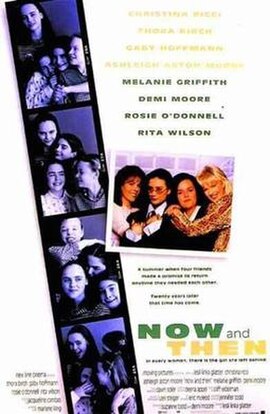Now and Then (film)
Videos
Page
Now and Then is a 1995 American coming-of-age comedy-drama film directed by Lesli Linka Glatter and written by I. Marlene King. The film stars Christina Ricci, Rosie O'Donnell, Thora Birch, Melanie Griffith, Gaby Hoffmann, Demi Moore, Ashleigh Aston Moore, and Rita Wilson. Its plot follows four women who recount a pivotal summer they shared together as adolescents in 1970.

Theatrical release poster
Lesli Linka Glatter
Videos
Page
Lesli Linka Glatter is an American film and television director. She is best known for her work on the AMC drama series Mad Men and the Showtime series Homeland. For her work in these two shows, she has received eight Primetime Emmy Award nominations and 7 Directors Guild of America Awards nominations, winning the latter 3 times. She has also received a nomination for Academy Award for Best Live Action Short Film for Tales of Meeting and Parting (1985).

Glatter in 2015